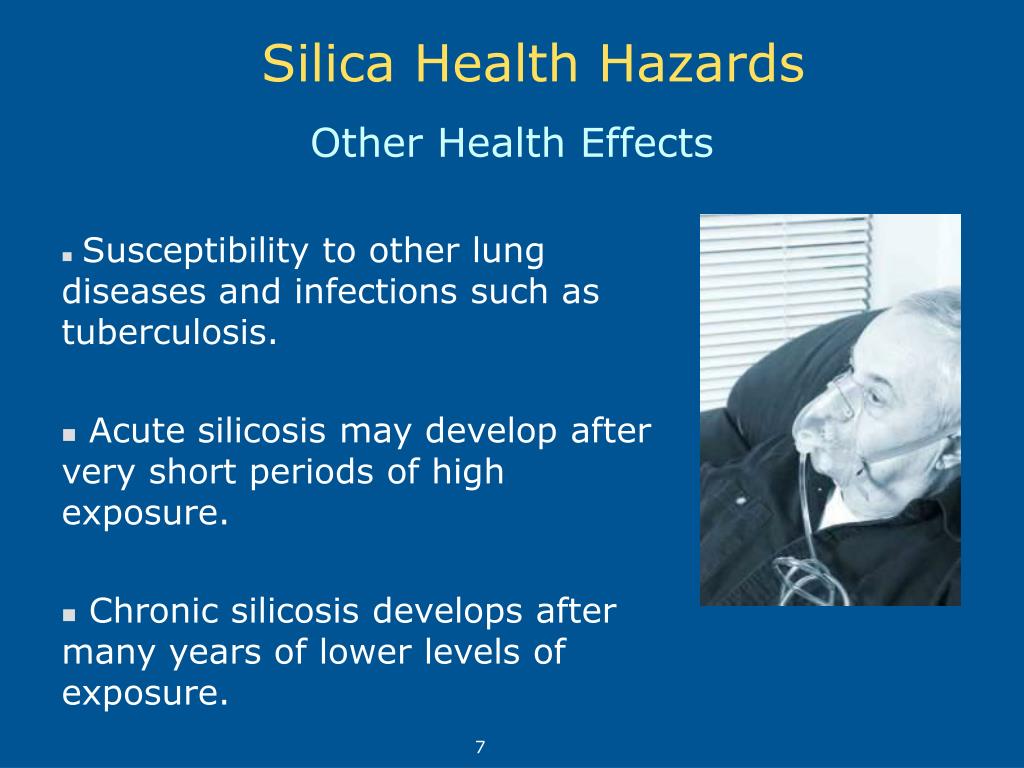

The workplace exposure standard for respirable crystalline silica (silica dust) that must not be exceeded is 0.05 mg/m3 (eight-hour time weighted average). More than one control will normally be required to adequately protect workers.

can develop after long term exposure to lower levels of silica dust and causes fibrotic nodules and shortness of breath.can develop after exposures of 3 to 10 years to moderate to high levels of silica dust and causes inflammation, protein in the lung and scarring of the lung (fibrotic nodules).can develop after a short exposure to very high levels of silica dust, within a few weeks or years, and causes severe inflammation and an outpouring of protein into the lung.If a worker is exposed to and breathes in silica dust they could develop: hydraulic fracturing of gas and oil wells, and.angle grinding, jack hammering and chiselling of concrete or masonry.abrasive blasting (blasting agent must not contain greater than 1 per cent of crystalline silica).brick, concrete or stone cutting especially using dry methods.mining, quarrying and mineral ore treating processes.clay and stone processing machine operations.excavation, earth moving and drilling plant operations.during fabrication and installation of composite (engineered or manufactured) stone countertops.Crystalline silica is most dangerous to health when dust is generated, becomes airborne and is then inhaled by a worker.Įxamples of work activities that can generate respirable silica dust particles include: Silica is one of the most abundant minerals found in the earth’s crust and is used in many products across a variety of industries and workplaces. Work activities that may represent a high risk exposure

The non-crystalline or amorphous forms of silica do not cause this kind of lung damage. Respirable silica dust particles are small enough to penetrate deep into the lungs and can cause irreversible lung damage. Some dust particles can be so small that they are not visible these are commonly referred to as respirable particles. Silica dust is generated in workplace mechanical processes such as crushing, cutting, drilling, grinding, sawing or polishing of natural stone or man-made products that contain silica. The most common type of crystalline silica is quartz (CAS 1).ĭifferent types of rock and rock products can contain different amounts of silica, for example: There are non-crystalline and crystalline forms of silicon dioxide. Silica is silicon dioxide, a naturally occurring and widely abundant mineral that forms the major component of most rocks and soils.


 0 kommentar(er)
0 kommentar(er)
